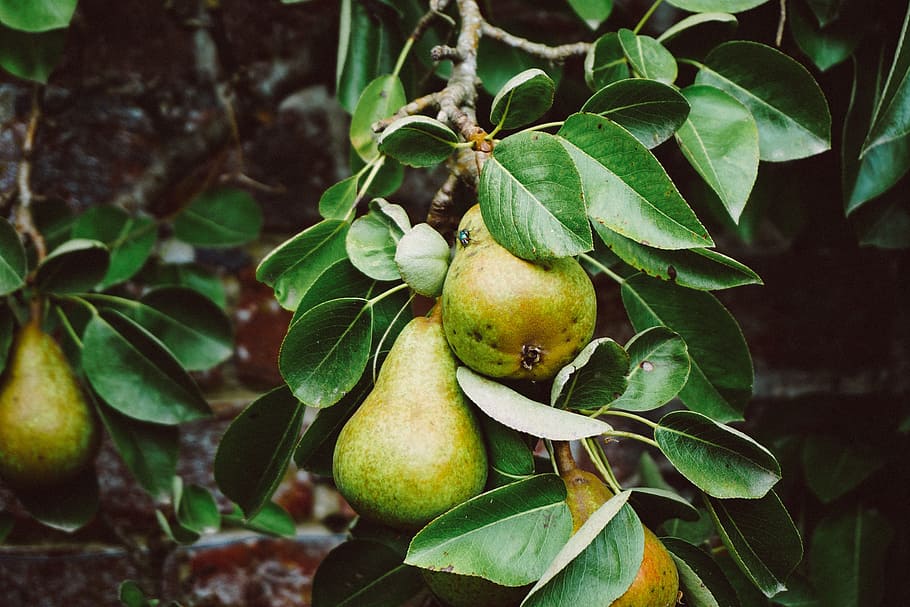| Hacon's Incomparable |
| A traditional high quality English pear, raised in Norfolk in at the start of the 19th century. |
| Harobig |
| |
| Harovin Sundown |
| |
| Harrow Crisp |
| |
| Harrow Delight |
| A heavy setting, medium size pear with very good flavor and smooth texture. It is from Ontario, Canada, hardy to at least USDA Zone 4 and resistant to fireblight and scab. Fruit ripens in early September. A proven winner at the Mt. Vernon station. |
| Harrow Gold |
| |
| Harrow Red |
| |
| Harrow Sweet |
| |
| Harvest Queen |
| |
| Hendre Huffcapp |
| It has a balance of tannin and acidity that makes it an ideal pear from which to make a single-varietal 'perry' pear cider. Tree habit is extremely upright. Ripens in October. Needs a early blooming European Pear. |
| Hermann |
| |
| Highland |
| The highest quality keeper pear, it thrives throughout the nation. This large, attractive dessert pear is yellow with some russetting. The flesh is very smooth in texture and rich in flavor. Trees are very hardy, of moderate vigor and very productive.The fruit matures in early October and developes its best quality if stored about a month. Ripen the fruit on your counter through Christmas. Highland was developed at the Geneva staion in New York state. |
| Honey Sweet |
| A smooth, buttery pear, similar to the well-known Seckel pear, but larger, Honey Sweet ripens to a golden russet late in the season. Trees will set fruit without a pollinizer, but fruit will be bigger if cross-pollinated. Honey Sweet is resistant to fireblight and to leaf spotting diseases, making it great for home gardens and local markets. |
| Hood |
| Hood pears are large, soft fruit that ripen in late summer. The pears are greenish-yellow, crisp, and juicy and can be eaten fresh or canned. The Hood Pear tree has a low chill for the South, requiring only 100-200 chill hours. Flordahome is the recommended pollinator. Hood Pear trees are, however, susceptible to leaf spot and fire blight. At maturity, it can reach a height between 15-20 feet and a width of 12-15 feet. USDA ZONES: Zone 7, Zone 8, Zone 9. |
| Hortensia |
| |
| Huntington Pear |
| |
